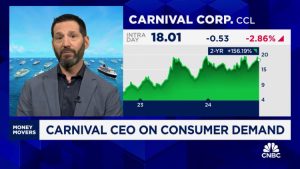If I was targeting a five-figure passive income and starting from scratch, here’s what I’d do today.
1. Open an ISA and/or SIPP
The first thing I’d do is look to open a tax-efficient Stocks and Shares ISA or Lifetime ISA. With these products, I can invest up to £20,000 a year (including a maximum of £4,000 in the latter).
I’d also think about opening a Self-Invested Personal Pension (SIPP). With this, I can invest the equivalent of my annual salary, up to a maximum of £60,000 per annum.
There are perks and drawbacks to each. Lifetime ISAs and SIPPs, for example, don’t allow me to withdraw any cash until I hit my late 50s. But they offer tax relief to help me build wealth.
Over several decades, ISAs and SIPPs can literally save investors hundreds of thousands of pounds in dividend tax and capital gains tax savings.
Please note that tax treatment depends on the individual circumstances of each client and may be subject to change in future. The content in this article is provided for information purposes only. It is not intended to be, neither does it constitute, any form of tax advice. Readers are responsible for carrying out their own due diligence and for obtaining professional advice before making any investment decisions.
2. Diversify my holdings
With my ISA or SIPP opened, I’d be looking to add a variety of different assets straight away. I’d be seeking to add between 10 and 20 separate shares to help me balance risk and reward.
I’d aim to get exposure to multiple sectors to reduce the impact of industry-specific threats and provide a smooth return across the economic cycle. I’d also ensure that the businesses in my portfolio source earnings from a variety of regions to seize different growth opportunities and spread risk.
3. Limit costs
Having said that, diversifying with small amounts of capital can lead to high costs, which can reduce the effectiveness of your investments in the early stages.
If I had £1,000 to spend in a Hargreaves Lansdown Stocks & Shares ISA, and intended to spread this across 10 different shares, I’d spend £89.50 in total in trading costs. I’d also pay £5 in stamp duty, meaning I’d have almost spent 10% of my available capital on taxes and fees.
I could solve this problem however, by purchasing a single investment trust or exchange-traded fund (ETF). If I invested the whole of my £3k in the iShares FTSE 250 ETF (LSE:MIDD), for instance, I’d pay a single trading fee of £8.95. And I wouldn’t pay anything in stamp duty.
With this fund, I’d have a stake in almost 250 UK mid-cap shares across a multitude of sectors. Some of the biggest holdings here include financial services provider St James’ Place, housebuilder Bellway and hobby retailer Games Workshop.
I’d also have exposure to the UK as well as overseas territories. Around 30% of FTSE 250 earnings are generated internationally.
An £11,680 passive income
As you can see however, the fund could be more vulnerable to a downturn in the British economy. I’d also need to pay an ongoing annual fee of 0.4%, which I wouldn’t face by buying individual shares.
But over the long term, I’m confident that this FTSE 250 fund could help me create big wealth. It’s delivered an average annual return of 8.6% since it started up 20 years ago.
If this continues, a £3,000 lump sum investment and £150 top-up a month would make me £291,988 after 30 years. Drawing down 4% of this each year would then give me a £11,680 passive income.
This post was originally published on Motley Fool







